As it reconvenes after its summer recess, Congress faces the prospect of a partial government shutdown by month’s end. Federal courts are already partially shutdown. Of 852 federal district and circuit judgeships, 87 were vacant on September 6. Thirty-eight of the 49 pending nominees have been waiting longer than has Judge Merrick Garland, who was nominated to the Supreme Court by President Obama on March 16. These vacancies, many of which are longstanding, have serious consequences for litigants and for sitting judges on vacancy-riddled courts in Texas and other states, as explained here and here.
As documented below, the current Senate has veered from the precedents created by recent similarly situated Senates. Since the January 2015 shift in Senate party control, district and circuit vacancies have more than doubled while confirmations have grown by less than a tenth. The question is whether this Senate will also veer from precedents for post-recess confirmations.
The majority rationalizes the current situation by claiming as did Senator Thom Tillis (N.C.), that “[a]ny reasonable, objective review of the record shows that President Obama has been treated much more fairly than his predecessor, George W. Bush”—because Obama confirmations outnumber Bush confirmations.
That’s true as to the numbers—but irrelevant. At this point in President Bush’s term, 207 district and circuit judges had taken senior status, versus 286 so far in Obama’s term (judges taking senior status create almost all vacancies). More vacancies call for more confirmations, but Obama’s 323 district and circuit confirmations exceed Bush’s by only 12. And his confirmation rate is 83 percent, slightly lower than Bush’s 85 percent. Obama’s final rate will match Bush’s final rate of 87 percent only if the Senate (in a month) confirms 15 judges. So far, in 16 months, it has confirmed 20.
Others call concern over vacancies a “manufactured crisis” because vacancies at some point in every president’s term since 1991 have been higher than this year’s “average vacancy rate.” They could also have noted that during Obama’s second year in office, when Democrats had a Senate majority, vacancies hovered briefly above 100, reflecting in part the sluggishness at that time of the administration’s nomination efforts. Exhibit 1 shows vacancies during Obama’s time in office at three month intervals and nominees confirmed during those three months. The vacancy dip in 2014 reflects Senate Democrats’ push, aided in part by the change in the filibuster rule, to confirm as many judges as possible before losing their Senate majority.
 Vacancies have doubled since January 2015
Vacancies have doubled since January 2015
Exhibit 1 also shows that after the January 2015 change in party control, confirmations slumped almost out of sight and vacancies began a steady increase.
Exhibit 2 contrasts the increase in vacancies in Obama’s fourth quarter so far with the records of opposition-party Senates in the final quarters of each two-term president since Reagan. Those Senates contained the vacancy rate while this Senate has let it balloon. Vacancies at the end of the convention recesses in 1988 and 2008 declined by half and by over a quarter, respectively, and held basically steady in 2000. Since January 2015 they have shot up by 118 percent—from 40 in January 2015 to 87 today.

Part of the increase reflects comparatively more vacancies to be filled. Exhibit 3 shows that 56 district and circuit judges have taken senior status since January 1, 2015, more than in any of the three comparable periods, including almost 50 percent more than in 2007-08.
 Confirmations have dropped off
Confirmations have dropped off
One might expect more vacancies to produce more confirmations. The opposite has happened. Exhibit 4 shows that from January of the seventh year through this same point in the eighth year of Reagan’s, Clinton’s, and Bush’s terms, confirmations increased in the 23 percent to 25 percent range, but for Obama’s fourth quarter, they have increased by only seven percent.
 Confirmation rates have also dropped off
Confirmation rates have also dropped off
The meager increase in confirmations is not because of a lack of nominees. Exhibit 5 shows that the confirmation rate (confirmations/active nominations) since January 2015 was 29 percent, compared to rates of 59 percent, 65 percent and 70 percent for the three previous periods.

As to the 36 vacancies without nominees (excluding one each in Puerto Rico and the District of Columbia), 27 are in states with at least one Republican senator, with a median age since the vacancies’ announcements of 17 months. Nine nominee-less vacancies are in states with two Democratic senators. Those vacancies have a median age of 8 months. Home-state Republican senators—as did Democratic senators during the Bush administration—are evidently making good use of the near veto over nominations that the blue-slip process provides.
Precedents and prospects for post-recess confirmations
There are meager precedents for post-recess circuit confirmations: none since two were confirmed in October 1988.
But precedents for post-recess district confirmations are fairly robust. Based on the figures in Exhibit 6, post-recess Senates confirmed from 7 percent to 17 percent of all fourth quarter confirmations—10 of 58, for example, in 2007-08. But given the 114th Senate’s record to date, confirming even 17 percent of its two-year total during the post-recess session wouldn’t produce much. Even if, in the post-recess session, the 114th Senate confirmed as many district judges as it confirmed up to this point, it would only reduce the vacancies by 18. But that would be better than the current situation.

Vacancies will accumulate through January and beyond. Eight future district and two future circuit vacancies are already on record, and more will likely occur.
Exhibit 7 shows that vacancies from the end of the eighth year recess to the January 20 end of the administration increased by 33 percent by the end of the Clinton and Bush administrations. Post-recess confirmations were overtaken by vacancies that accumulated during the several months that the Senate was not in session.

If vacancies increase by 33 percent from now until January 20, 2017, with no post-recess confirmations, the next president will be faced, off-the-bat, with 115 or more vacancies—14 percent of all district and circuit judgeships in the United States.
The Brookings Institution is committed to quality, independence, and impact.
We are supported by a diverse array of funders. In line with our values and policies, each Brookings publication represents the sole views of its author(s).

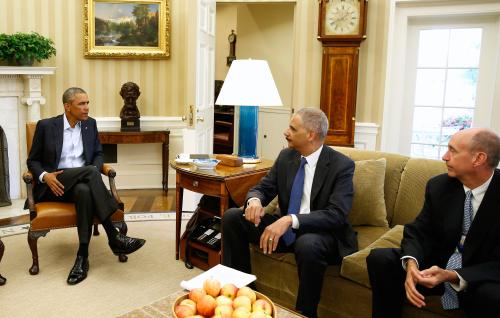
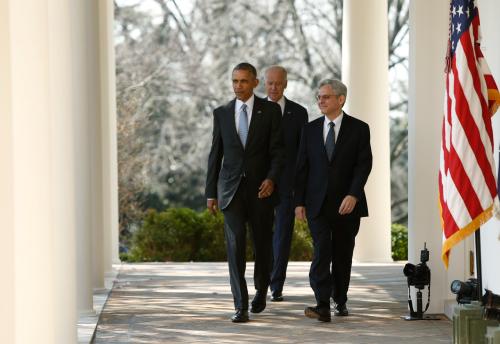
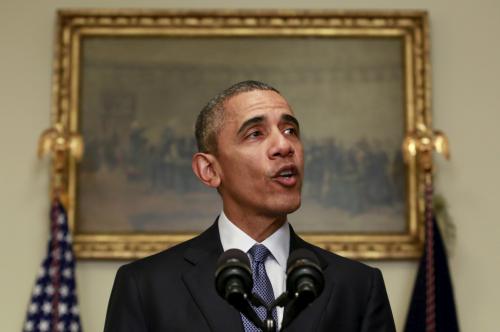
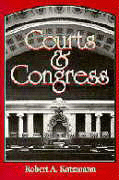


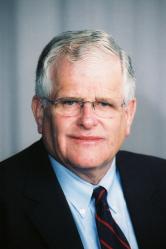



Commentary
Recess is over: Time to confirm judges
September 6, 2016